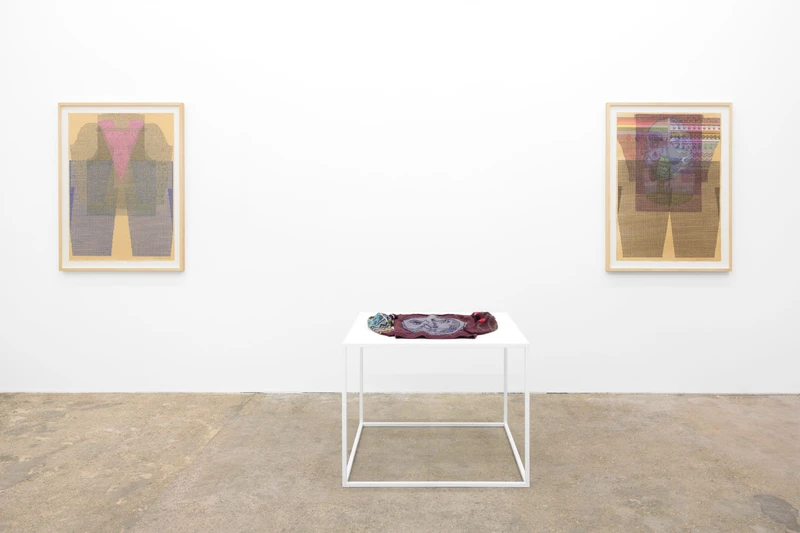Ellen Lesperance: Will There Be Womanly Times?
1 Jul-11 Sep 2021


Hollybush Gardens is pleased to present Will There Be Womanly Times?, a solo exhibition of new work by Ellen Lesperance, marking her first exhibition in London and inaugural show with the gallery. The exhibition is established from Lesperance’s ongoing research into the activity of the Greenham Common Women’s Peace Camp, a long-standing protest organised by women in response to the military-industrial complex and the escalation of nuclear power within the UK. Greenham’s Peace Camp was established in 1981 by a small group of Welsh mothers, initially known as Women for Peace of Earth, who walked for seven days from Cardiff to the RAF Greenham Common site in protest of its nuclear and military development. From here, the peace camp protest would continue for another 19 years.
For Will There Be Womanly Times?, which coincides with the 40th anniversary of this first march by the Greenham Women Peace Camp, Lesperance presents a slide show of archival images, documenting the lived experience of the Greenham protestors, alongside a set of paintings and hand-knitted garments. While the exhibition displays intersecting communication among varied mediums, Lesperance’s attention pertains to the knitted jumpers created by the Greenham protestors. Working from recovered photographs, Lesperance translates knitwear into the instructive knitting vernacular of Symbolcraft, rendered in gridded paintings with each square equivalent to a stitch. Given the partial nature of Lesperance’s source material, certain features such as colour or pattern are arranged intuitively by Lesperance from the photograph’s composition and its limited information. As a result, the paintings deviate from cohesive historicisation, existing rather as fallible facsimiles and ambiguous portraits of specific garments.
Emphasising the women’s use of pattern, colour, symbology and language, Lesperance identifies the rainbow as a unifying textural motif for the exhibition. By revivifying this favoured symbol among the Greenham knitters — as a harbinger of hope as well as a nascent symbol of queer pride — Lesperance emphasises its effectual radicalism as a self-identification marker, at once empowering, explicit, and endangering. In view of our contemporary political, health and environmental crises, Lesperance traverses various historical contexts by revisiting the rainbow’s symbolism. Other metaphoric language is made evident in women’s symbols, a pink triangle, peace signs, labryses, trees and crescent moons.
Presenting hand-knitted garments alongside the paintings (themselves informed by the translation of live body to representational photograph), Lesperance creates a multi-dimensional means to represent the figurative which does not relinquish a body’s presence. Between photographic resource, painted plane and knitted object, a collective subjectivity is able to manifest in its multiplicity. It is in Lesperance’s specific examination of the sociality inherent to embodied, politicised craft, that one distinguishes the women’s adoption of second-wave feminism and lesbian identity formation which informed features of the peace camp’s non-violent campaigns. Lesperance affirms the extensive creativity of the Greenham women, opposing their cultural erasure and provoking an expanded practice of activism. By articulating the vital mutuality between protest and creation, Lesperance sustains the resonance from this historical period of diverse creative action.
Ellen Lesperance Press Release
Download